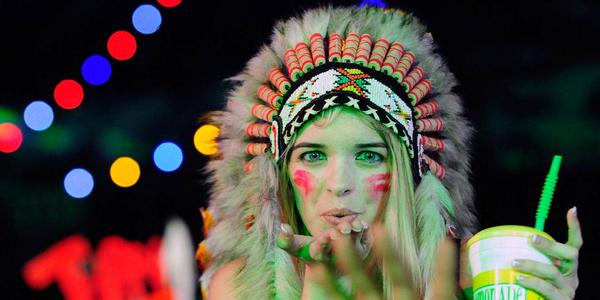
It has become a clichéd scene at music festivals – attendees parading around the event site, surrounded by a kaleidoscope of feathers, cascading from the cheap, poorly constructed replica of the Native American war bonnet that is perched on top of their head.
On the surface, this may appear to be a pretty innocent image. But to many people, it is an image that represents a crude act of racial stereotyping.
In fact, the presence of the Native American headdress at music festivals has attracted such controversy in recent years that numerous events worldwide, including Glastonbury and Canada’s Osheaga festival, enforced a ban on the headdress this summer.
So what’s the big deal? I mean, it is just a pretty accessory, right?
Unfortunately, this attitude could not be more ignorant.
To the people of the Native American community, the headdress has immense spiritual meaning, and symbolises that the person wearing it has gained the privilege through acts of great leadership. However, its significance is completely belittled when someone with no connection to or knowledge of the heritage wears the headdress with the sole aim of achieving a ‘cool’ bohemian look.
This issue all circles back to the prevalent topic of cultural appropriation. To those who are unfamiliar with the term, cultural appropriation is when someone adopts elements from a culture which is not their own. When viewed in their own culture, certain styles are considered as a symbol of degradation and racist generalisation, but when a more privileged culture adapts them they are viewed as chic and trendy.
Some people deem the concept of cultural appropriation as being overly sensitive to political correctness. However, culture is an integral part of a person’s identity, something which I don’t think people realise until they experience their own culture being devalued and disrespected. And when your culture has been the victim of colonisation and racial prejudice for centuries, this sensitivity is bound to be heightened.
Defenders of designers guilty of appropriation are quick to jump to the position that wearing such garments is actually cultural appreciation. And they do have a point, to a certain extent. Cultures often offer beautiful aesthetics which are bound to inspire designers. However, even if their intentions are good, their execution leaves a lot to be desired, as clothing brands repeatedly refuse to acknowledge that a certain culture has inspired their work.
For example, Valentino featured models wearing cornrows in a campaign early this year. Not only did the Italian fashion house completely fail to publicly recognise that they were influenced by the African community who the hairstyle owes its roots to, but also failed to include a single black model in the campaign.
This sends a clear message to the African community – we want to steal elements of your style to help sell our commercial items, but have no interest in giving you or your heritage any of the credit.
This is only one case of cultural appropriation which has received a massive backlash from the public. Reality TV star Khloe Kardashian was called out in recent months for posting an Instagram picture of her wearing a niqub, a garment worn by Muslim women to cover their face, while lingerie retailer Victoria Secret came under fire last year for sending model Karlie Kloss strutting down the catwalk wearing the Native American headdress and very little else.
Despite the level of debate that surrounds the topic, cultural appropriation is never going to disappear – after all, people do have the right to wear whatever they want. But if you are going to wear an item inspired by a culture that isn’t your own, consider the context and educate yourself in the meaning of what you are wearing. Another persons culture is not there to be sexualised or worn for a cheap laugh, but instead should be approached with the respect that every ethnicity deserves.
Lisa O’Donnell
Image Credit:Getty Images




Leave a Reply